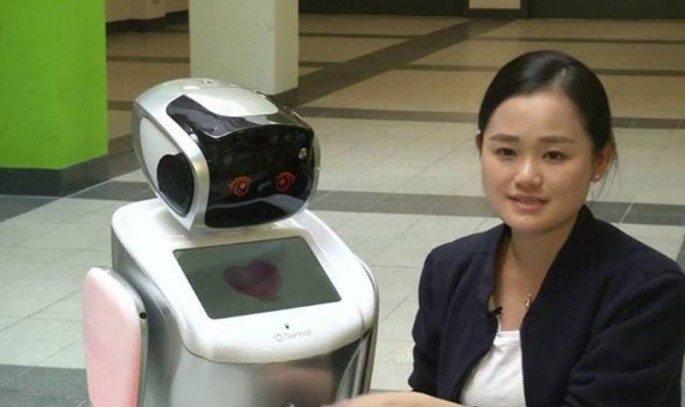Two weeks after debuting robot policemen at an airport in Shenzhen, China revealed a new set of police robots, this time at three port cities in Guangdong province, southern China.
There are now 10 operational police robots at the customs zones at the ports of Gongbei, Hengqin and Zhongshan in Guangdong. These one meter tall robots named "Xiao Hai" also move around like the "Anbot" police robots do at the Shenzhen Bao'an International Airport.
These machines look like robots to encourage people to talk to them. They're equipped with state-of-the-art perception technology and can listen, speak, learn, see and walk. Their video camera eyes can also see, hear and record anyone talking to them.
Referring to a built-in specialized customs database, Xiao Hai can answer questions in 28 languages and dialects, including Cantonese, Mandarin, English and Japanese.
The police cop refers a person to a customer service hotline if it can't understand or can't answer a question but this feature isn't available yet.
Xiao Hai have face recognition technology that can detect suspicious people and raise an alarm, said Zhao Min, director of Gongbei customs.
On the other hand, Xiao Hai's "cousin," AnBot stands 1.4 meters tall, weighs 75 kg and can push its portly frame forwards to a speed of 18 km/h. Its armed with a taser activated remotely by a policeman watching through the robot's eyes.
AnBot is the first robot in China programmed to carry out security checks. It patrols the departure hall of terminal three at the Shenzhen airport in southern China every hour, every day. Its makers also claim AnBot can be used to deter terrorist attacks.
AnBot's eyes are four high-definition digital cameras that use mobile face recognition to weed out suspect. The images the robot sees are transmitted for analysis to security personnel manning computers.
AnBot has four policing duties: independent patrol, face recognition, intelligent service and emergency response. It was developed by Shenzhen Public Security Bureau, the National University of Defense Technology and a Chinese technology company.



























